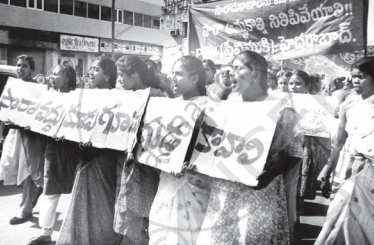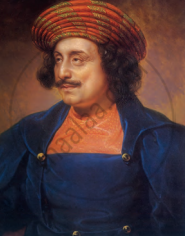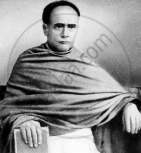Topics
Historiography : Development in the West
History : Applied History
Working of the Constitution
Historiography : Indian Tradition
The Electoral Process
Political Science : Working of the Indian Constitution
Applied History
Political Parties
History of Indian Arts
- What is ‘Art’?
- Indian Traditions of Visual Arts (Drik Kala): Painting
- Prehistoric Paintings
- Mural Paintings and Cave Painting
- Folk Styles of Paintings
- Classical Styles of Painting
- Miniature Paintings in Manuscripts
- Modern Indian Paintings
- Indian Traditions of Visual Arts (Drik Kala): Sculpture Art
- Indus Civilization Sculpture
- Folk Styles of Sculptural Art
- Classical Styles of Sculptural Art
- Indian Iconography
- Indian Traditions of Visual Arts (Drik Kala): Architecture and Sculpture
- Rock-cut Architecture
- Temple Architecture
- Indo-Islamic Architecture
- Indo-Gothic architecture
- Indian Traditions of Performing Arts
- Indian Theatre
- Indian Music
- Indian Dance
- Present Scenario of the Performing Arts
- Art, Applied Art, and Professional Opportunities
Social and Political Movements
- Movement
- Important Movements in India
- Tribal Movement
- Farmers Movement
- Worker's Movements
- Women’s Movement
- Environment Movements
- Consumer Movement
Mass Media and History
Challenges Faced by Indian Democracy
Entertainment and History
Sports and History
Tourism and History
Heritage Management
History - Imperialism
History - 20th Century Age of conflict
History - Emancipation of Asia and Africa
History - World after World War 2
Political Science
Geographical discoveries and colonization
- Concept for Geographical Discoveries and Colonization
Africa
- Imperialism - Africa
Asia: India, China, Japan
- Concept for Asia: India, China, Japan
Dictatorships in Europe, Second World War and world
- Concept on Dictatorships in Europe
- Concept for Second World War and World
First world war
- Concept on First World War
The League of Nations
- Concept for the League of Nations
Russian Revolution
- Concept for Russian Revolution
United Nations Organization
- Concept for United Nations Organization
Africa
- Emancipation of Africa
Asia
- Emancipation of Asia
Globalization
- Globalization After World War II
Scientific and Technological Progress
- Scientific and Technological Progress After World War II
Cold war
- Formation of the Cold War
Social Diversity and Democracy
- Social Diversity
- Coccept for Caste/Race and Democracy
- Concept for Language and Democracy
- Cocnept for Religion and Democracy
- Concept for Gender and Democracy
- Concept for Democracy and Diversity
Challenges to Democracy Remedial Measures to the Challenges
- Concept for Challenges to Democracy Remedial Measures to the Challenges
Internal work
Democracy
- Democracy - Meaning, Types and Characteristics
Political Parties and Types
- Political Parties
- Importance of Political Parties
- Major National and Regional Parties in India/ Types of Political Parties
Notes
The Women’s movement:
- The women's movement was started in India during the time prior to independence by progressive males. The women's movement worked to abolish the exploitation of women, end injustice against them, and empower them to live honourable lives and take an active role in society.
- The movement demanded that women should be treated as human beings and the freedom of women.
- After Post independence, women participated to a great extent in the movements against corruption, caste discrimination, and religious extremism which made them aware of injustice against their own selves.
- Women started taking initiative in Organising against injustice.
- In India, the women’s movement is not homogeneous in nature. However, women’s movements at various levels are taking up the issues like women’s health, social security, financial independence, and empowerment.
- Today women’s movement faces the challenge of equal education for women and giving women status and prestige as human beings.
Famous faces behind women's movement:
|
Rammohun Roy |
1. Movement against the Sati practice:
|
|
Ishwarchandra Vidyasagar |
2. Efforts for widow women welfare:
|
|
Jyotirao Phule |
3. Reforms in woman's education:
|
Modern Women Movement:
-
Women in Andhra Pradesh's Nellore district banded together in spontaneous local actions to oppose the sale of arrak and to compel the closure of a wine shop. The information quickly spread, inspiring women from over 5000 villages to convene meetings, pass resolutions calling for the imposition of prohibition, and send them to the District Collector. The Nellore District's movement gradually extended over the entire State.

Women taking out procession in Hyderabad in 1992,protesting against the selling of arrack
- Women's organizations that addressed domestic abuse, the practice of dowery, sexual assault at work, and public places were active in various sections of the country in the past, mostly among urban middle-class women.

Women’s demonstration in favour of anti-dowry act
- The women's movement in the 1980s concentrated on concerns of sexual violence against women, both inside and outside the home. These organizations waged a campaign against the dowry system and urged that personal and property laws follow the standards of gender equality.
-
During the 1990s, the movement called for equal participation of women in politics. We are aware that the 73rd and 74th amendments gave women voting rights in local political positions. Similar reservations have also been requested to be extended by State and Central legislatures.
If you would like to contribute notes or other learning material, please submit them using the button below.



